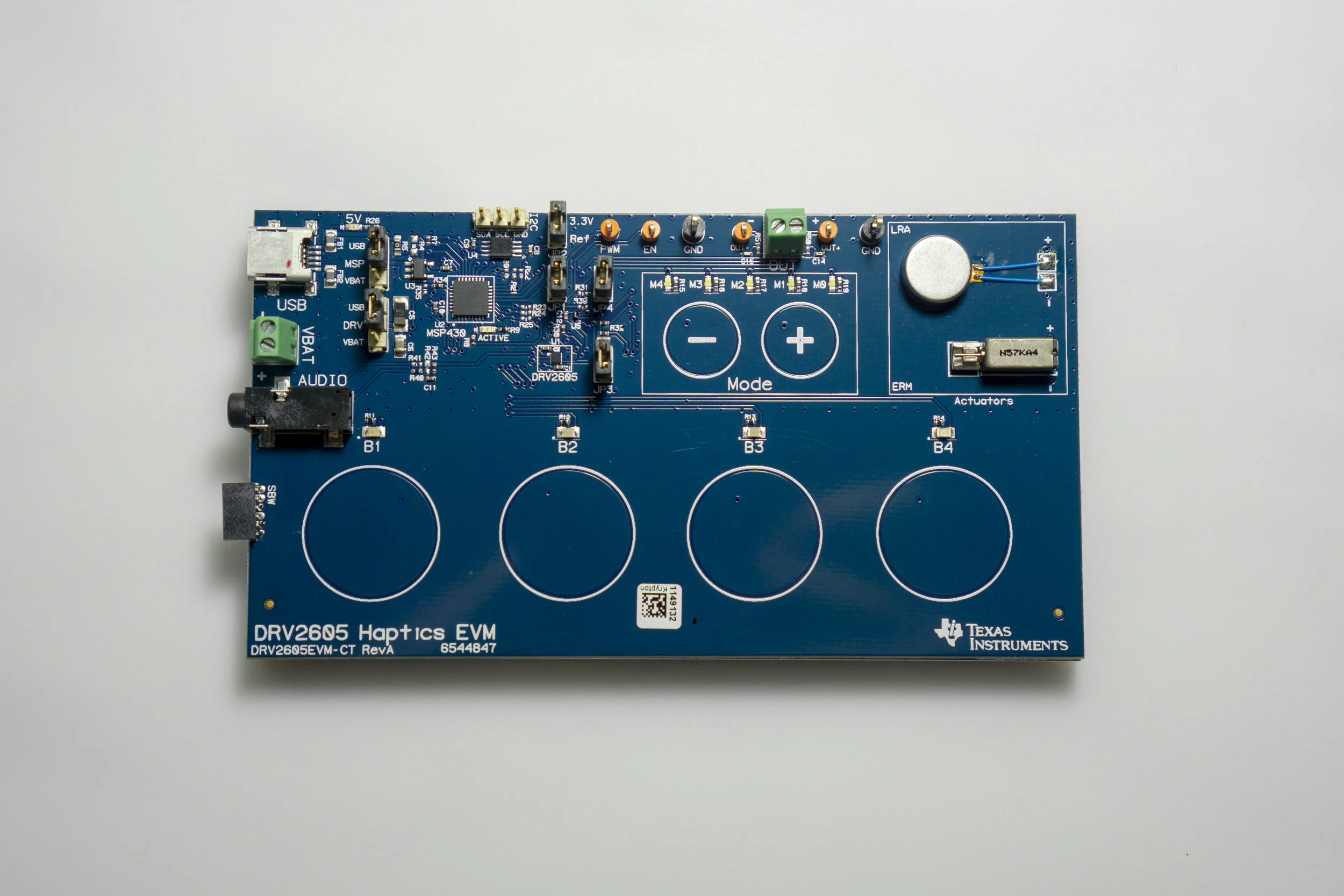
We mounted different ERM (eccentric rotating mass) and LRA (linear resonant actuator) motors to different locations on weighted shells to test performance.
We received feedback from multiple users on factors such as minimum detectable motion as well as the ease of identifying patterns.
Mounting the motors off axis resulted in the most noticeable vibrations.
In addition, tangential radial motion and any linear motion produced noticeable feedback improvements when compared to the motors used in the very first Pebble devices.